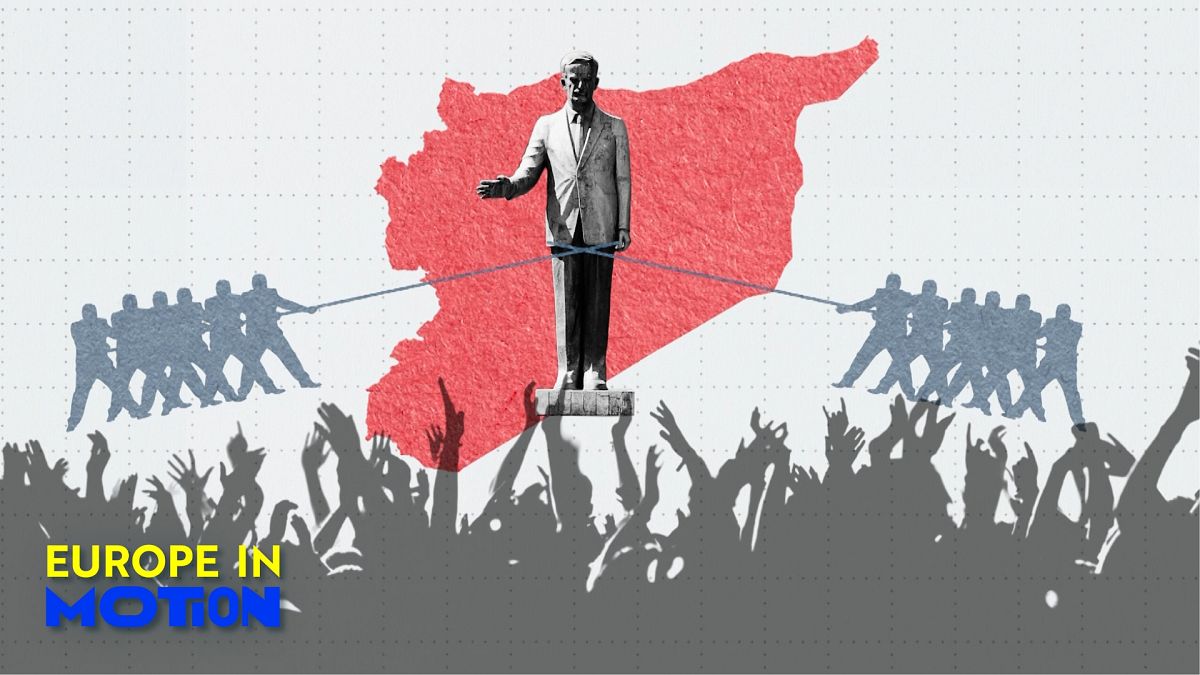Syria’s new ruling faction has cut ties with Al-Qaeda and pledged to respect religious minorities. But their track record leaves many open questions on the future of democracy in post-Assad Syria.
The future of Syria remains uncertain as the country transitions from the Assad regime to a new, Islamist government.
The country remains under pressure, with the Israeli invasion of areas in the Golan heights and bombardments on Syrian military capabilities throughout the country, as well as Turkey-backed attacks on the Kurds in the northeast
The new transition executive led by the rebel faction that toppled Assad – Hayʼat Tahrir al-Sham (HTS) – is trying to consolidate its power and unify the country by establishing contacts with the armed groups in the south, presenting itself, at the same time, as a moderate power.
Do human and women’s rights remain under threat in Syria?
The HTS cut its ties with Al-Qaeda in 2016, and even promoted itself as a potential partner in the fight against terrorism, Syrian political scientist Joseph Daher told Euronews.
“There’s been a clear evolution of the party since it started to govern some parts of Syria and establish its administration”.
Yet, he says “Syrians shouldn’t trust them. It’s an authoritarian organisation with an Islamic fundamentalist ideology.”
“They’re trying to look like a moderate, rational and legitimate actor. Does it mean they’re a democratic organisation? Not at all”.
‘Tolerance for minorities doesn’t mean political rights’
The group pledged tolerance for religious minorities, but “that doesn’t mean they accept them as equal”, says Daher.
“It’s not about being able to pray or not, it’s about participating in the decision-making process.”
“Women’s rights are also a challenge. HTS didn’t hesitate to close NGOs or organisations promoting gender equality.”
“Their violations of human rights – such as arresting political opponents – were also condemned in protests a few months ago. But we have to be clear that Assad’s regime was a barbaric and despotic dictatorship.”
“Everything will depend on the ability of the Syrian society to defend its rights and organise itself as a democratic bloc, establish independent trade unions, feminist organisations, local associations and connecting them through national structures and so on”.
What’s going to happen to Syrian refugees in Europe?
The overthrow of the Assad government could change the fate of thousands of Syrian asylum seekers in Europe
Since the civil war broke out in 2011, hundreds of thousands of Syrians sought protection in Europe and other neighbouring countries.
Turkey alone is estimated to host three million Syrian asylum seekers, according to official data, but the actual figures might be much higher
In the EU, Syrians were the largest group to receive protection status in 2023 (32%) numbering around 130,000 people.
Syrians and Venezuelans were the group with the highest recognition rate following an application, over 90%.
EU members approved 51,250 applications by Syrian citizens last year, half the number reached with the 2018 peak of 103,365. Eurostat data shows the number has been going down since then.
In 2023, Germany approved the most applications (16,230), followed by France (13,605), Italy (11,315), Austria (3,645) and the Netherlands (1,660).
Within the bloc, Germany is home to the largest Syrian population, with more than 1.2 million people. But the end of “the Assad tyranny”, as Berlin called it, has prompted Germany to freeze nearly 50,000 asylum applications.
France, the UK, Italy, Belgium, Norway, Denmark and Sweden announced similar measures. Austria – which is home to around 95,000 Syrian refugees, went even further by declaring the preparation of deportation plans.
Syrians ‘shouldn’t be forced to go back’
“Syria is not a secure country even if Assad is gone” says Daher.
“Syrian refugees should have the right to stay or to go back if they want. But they shouldn’t be pushed.”
“The situation in the country is very bad: 90% of the population lives in poverty. There’s a massive destruction of infrastructure, lots of qualified manpower have left the country, and transport links are very bad.”
“The agriculture sector has suffered a lot of destruction and salaries are very low. And even if people do go back, we don’t know if their houses have been destroyed or not.”
“Syria will still need international and humanitarian assistance for its development in the coming years. The next government shouldn’t repeat the mistakes of the previous one by choosing a development that benefits only a small minority instead of the majority of Syrians.”
“There is still a lot of uncertainty now, but also hope to rebuild”.
Read the full article here


